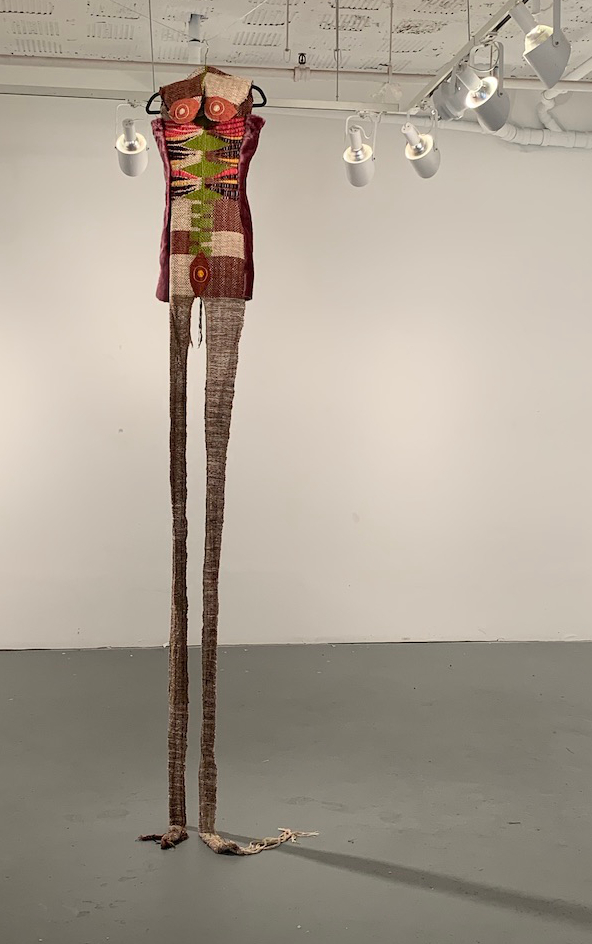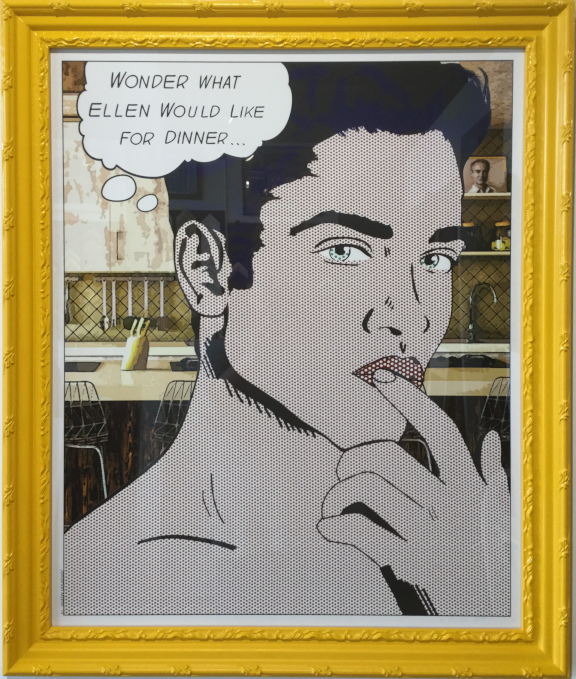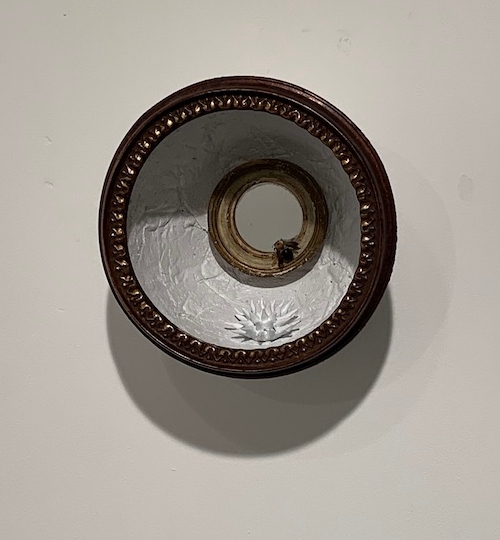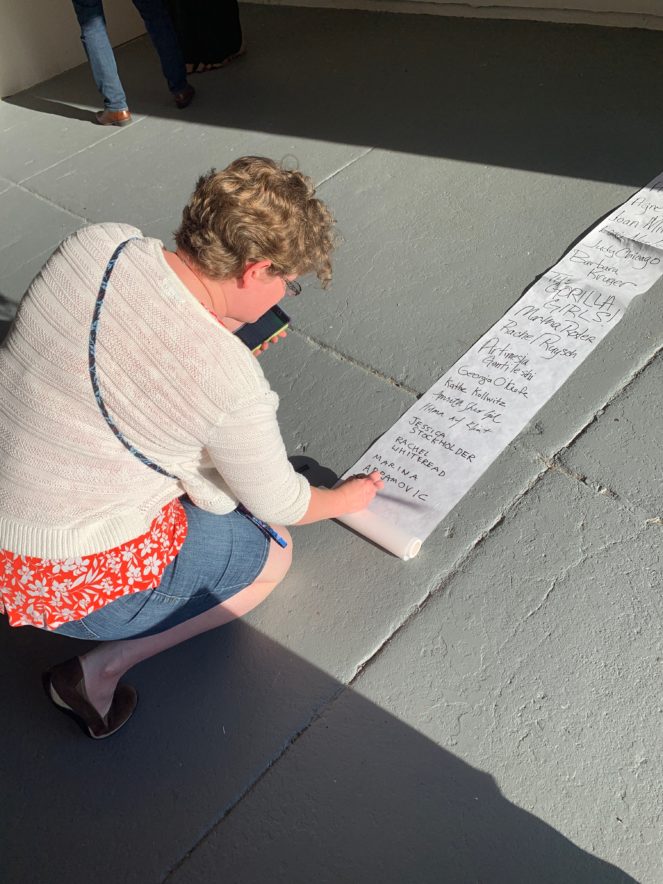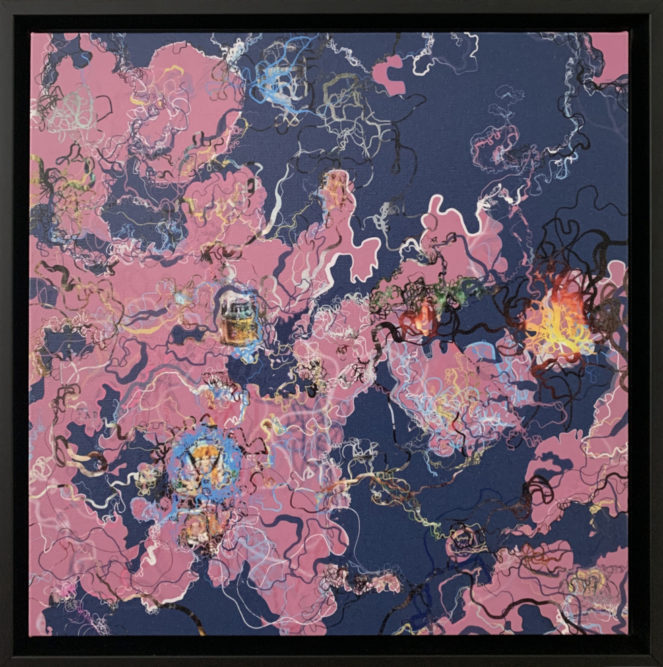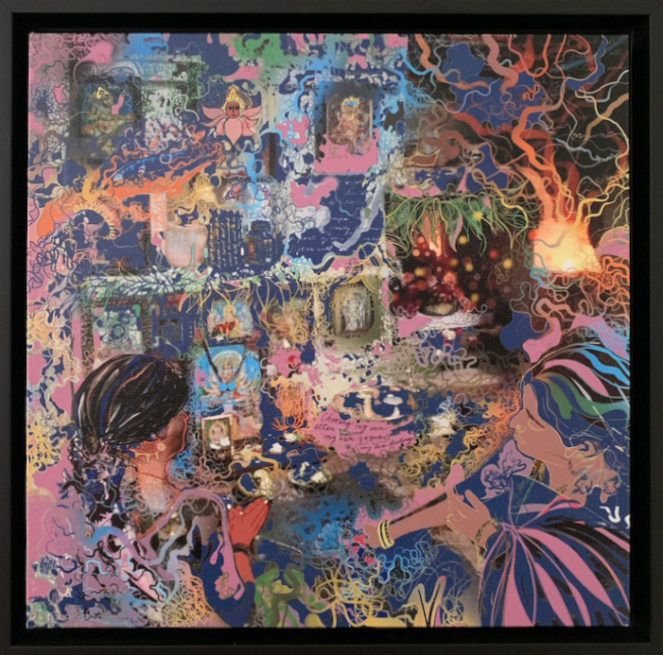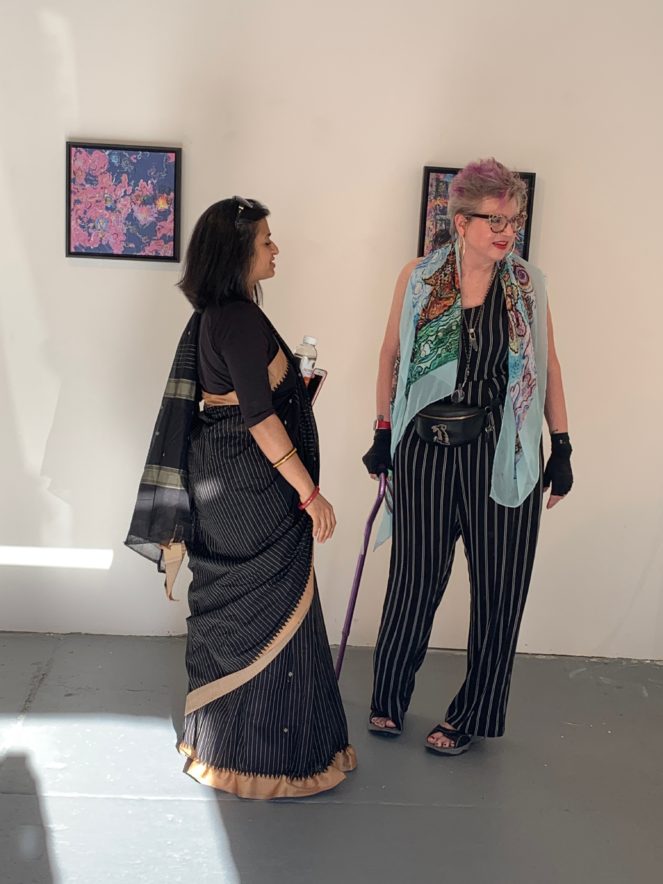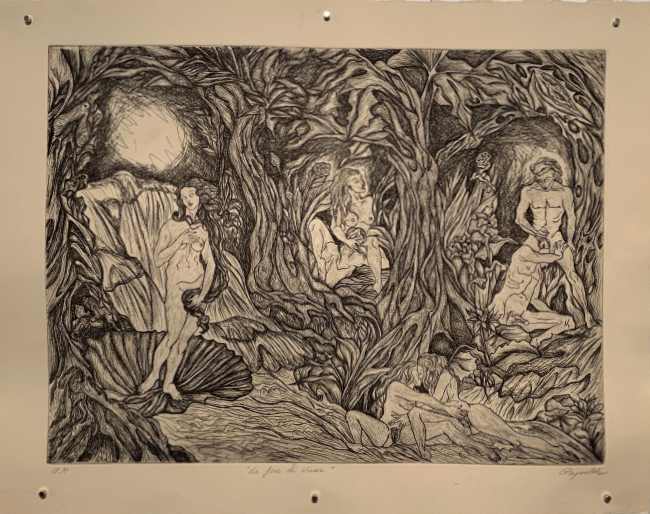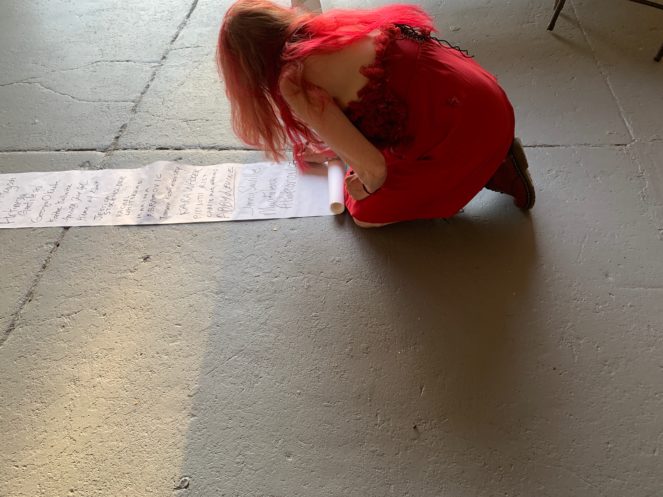Eating Our Fathers Part 2
Juliet Martin
facebook & instagram @remotelyjuliet
JulietMartin.com
My Eyes are Down Here
You can’t look away. I’ll make it easy for you.
Headless, hand-woven female bodies wait in the gallery. The ladies proudly look back at objectifying eyes. These women won’t be objects of desire. Embroidered eyes glare from breasts and loins and ovaries — their faces wouldn’t be seen anyway. Gaze. In the pressure cooker of the gallery, pride, not shame; strength, not fear. Gender power is symmetric here.
Out-of-place eyes and domineering arrows direct the viewer to improper places without wasting any time, away from the missing brain. Or is her brain elsewhere? Identity is forced to become the body.
The walls will be lined with body-costumes, female figures draped on coat hangers. Fallopian pillows will border the walls. Sewn-on eyes will look back at viewers, daring them to protest.
Look at her and slur. Look into my eyes. Wait, you already are. You can’t look away.
Ellen Martin
@ellenmartin
EllenMartin.com
When Stacey asked me to be a part of Eating Our Fathers, I immediately knew I would do a riff on Roy Lichtenstein’s depictions of women. They may or may not be parodies of the prevalent attitude of the day, but their underlying philosophy is anathema to independent women.
My attack is two-pronged. Here a young good-looking man asks ““Wonder what Ellen would like for dinner tonight?” The male is the one who wants to please a woman, and not the other way around.
I’m also addressing the double standard of the May-December relationship. It’s generally been fine when it’s an older man-younger woman scenario but taboo the other way around (albeit becoming less so).
My piece took a small village to come to fruition. I had the concept, but there was no way I could create the illustration. I left that to my wonderful nephew, Jonathan Martin. I had some words, but my Curator, Stacey AS Pritchard, helped me hone them into a more pithy and concise statement. And lastly, my very capable framer/printer created a beautiful print and had the inspiration for the frame.
Kate Eggleston
instagram @kate.eggleston
Kateeggs.com
I was inspired by a quote from an interview with artist Rene Magritte wherein he was discussing his painting “The Son of Man.” I have always perceived Magritte’s painting as a wholly patriarchal attempt to withhold eye contact in order to make the viewer feel anxious for the figure’s approval. My piece is a sculptural counterpoint to Magritte’s painting, specifically his thoughts on the visible hidden/present. This female perspective, or “daughter of woman,” is represented as a pure white vessel with an organically textured surface, ringed with an aged ornate frame. The interior cradles a tiny scratched mirror with a bumblebee holding into its edge, as well as a miniature spiked plant set at the swell of the bowl. In “The Son of Man,” the figure’s face is obscured by a shiny, green apple. In my piece, the viewer has to struggle to find a proper position in order to see their reflection in the mirror (even then, it is partial and blurred), which is further distracted by the plant and the bumblebee. Magritte’s “Man” and my mirror both obscure eye contact as a way to deny the viewer approval or praise associated with the gaze.
Hema A. Bharadwaj
facebook @HemaBharadwajArt
instagram @hema_a_bharadwaj
hemabharadwaj.com
I grew up looking at O’Keeffe’s and Amrita Sher Gil’s work. Women, powerful and connected with their own vision of the world. My art education however was definitely more androcentric. Which I could re-consider given the opportunity presented via “Eating Our Fathers” to do the same.
For a long time I was trapped in the throes of fluctuating between being ‘my own SELF’ and ‘the self that aligned with the heavier tradition of that which society allowed’. The part of society that controls people is masculine in form. The female energy allows and acknowledges change and creation and is more in tune with equality.
As I dwelt on the curator’s vision for this show, I felt my thoughts seeping out of me and into the family altar that I worshiped at during my wedding. The altar symbolized the entire universe and yet the process was male-driven. The priest was male. The female role subdued and not allowed her full glory. I felt strands of energy and confusion swirling all around and within me.
A couple of decades later, there is a new map within me woven from the strands of the old and new. Today I don’t feel the need to align with anyone else’s sense of what should be. I can explore uncharted paths fearlessly and create new ones. Being my own complete Self is crucial to my I AM. These pieces explore this new perspective that flourishes despite the androcentric aspects to my art education.
My work thru line and form comes from connecting with my own journey. I have lived in different cultures and seen them mingle with my understanding of the interconnectedness of everything. Creating interesting passages in my paintings makes me happiest. Like a favorite line from a poem, they take the viewer to a new space. I explore and expand my art language constantly to achieve this.
Reynolds
facebook @Reynolds N. Art
instagram @reynoldsnart
reynoldsnart.com
momsformusuems.com
Reynolds holds a BA from Sarah Lawrence College where she concentrated in Women’s History. At SLC, she studied painting with Richard Pousette-Dart, and printmaking with Ansei Uchima. She has a BFA and MFA from the School of Visual Arts. She has worked as an artist/teacher for Studio in a School, The Guggenheim Museum. The Folk Art Museum, and is presently employed at The Brooklyn Museum as a Gallery/Studio teaching artist. She is a painter, printmaker, digital artist, and performance artist. Her last one person exhibition was “nAsty womAn” at studio.ra in Rome
Stacey AS Pritchard
I wanted something to happen around the exhibit that would reflect not only all the topics and conversations that were explored during the development of the show, but how we kept finding ourselves back at reflecting on female artists that we had all discovered along the way that had quietly and loudly inspired us all. The morning I went to install the show I dug around my studio for a large paper to use to list these women. When I stumbled across the roll of rice paper and I was immediately reminded of Carolee Schneeman’s manifesto. The list has grown and I consider it open. If you know of someone that should be added please contact me to let me know at stacey@staceypritchard.com (Understand that when I do say “us all” I am including all those artists that were interested but unable to produce a piece for the show and all the people that interacted with the show and walked away with fresh conversations.)
